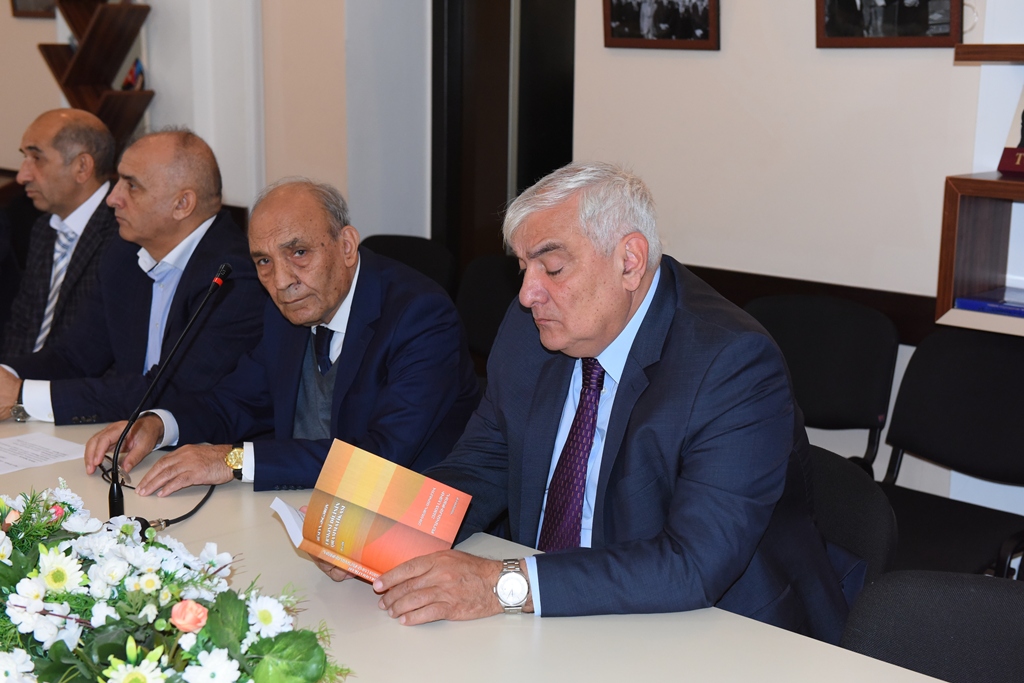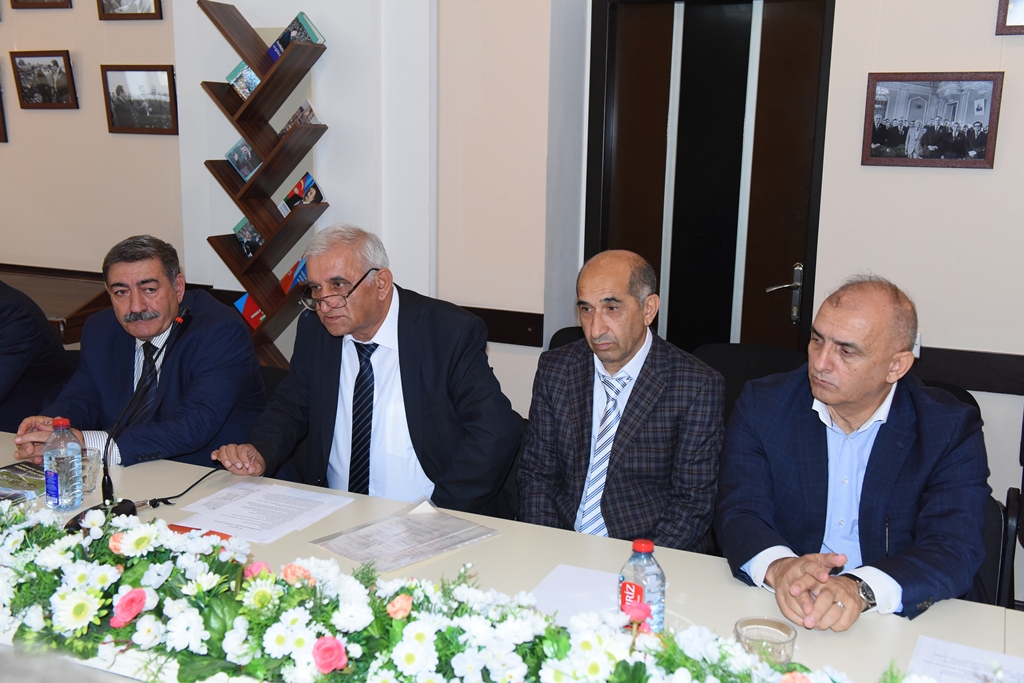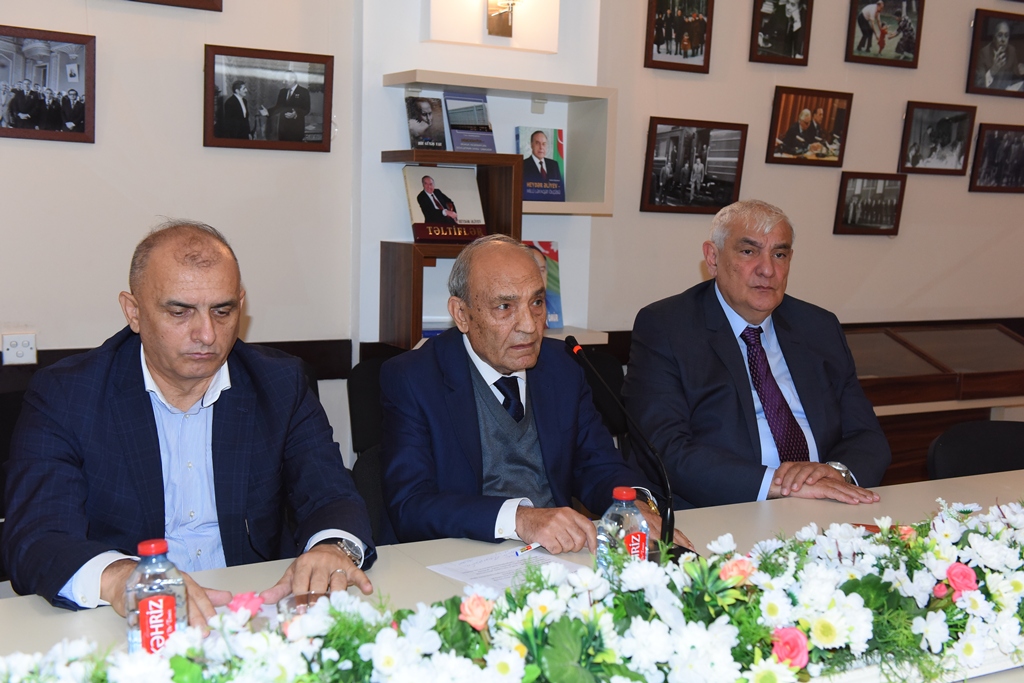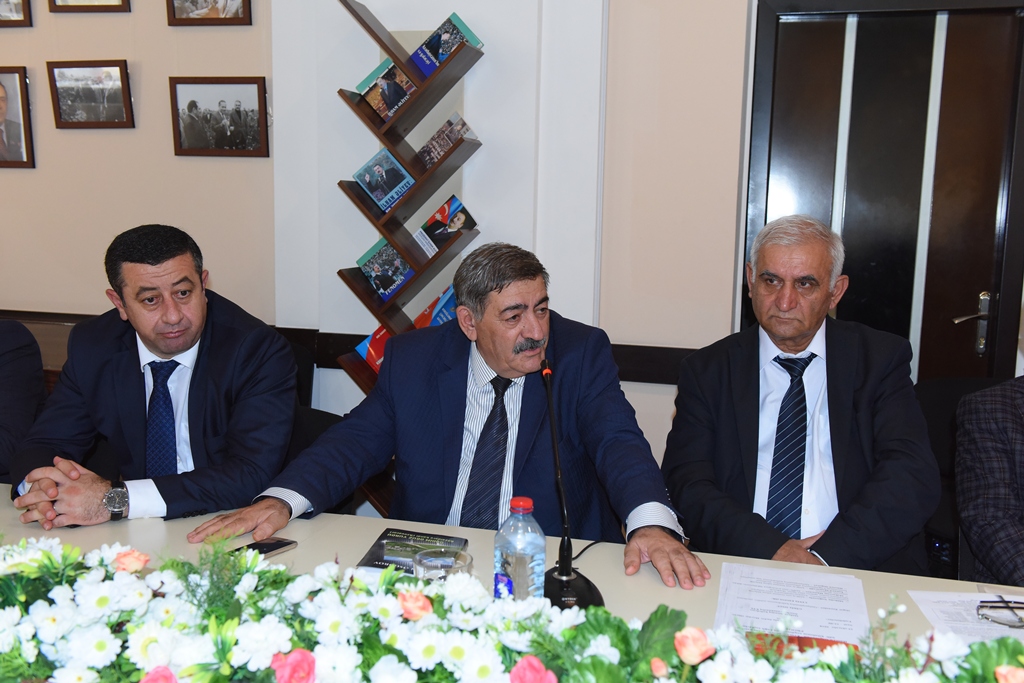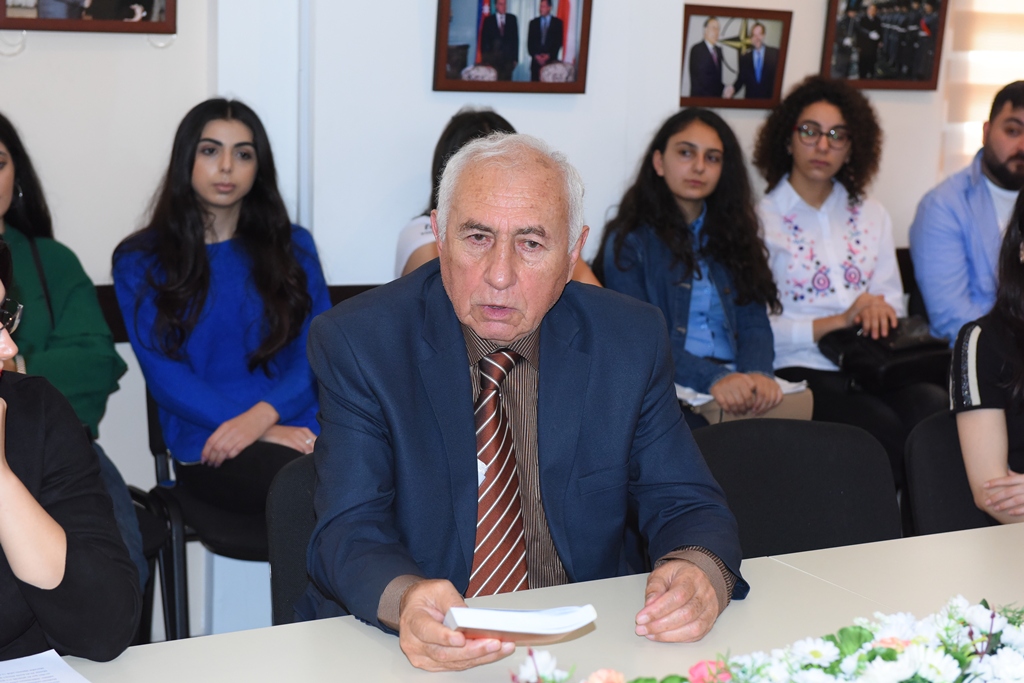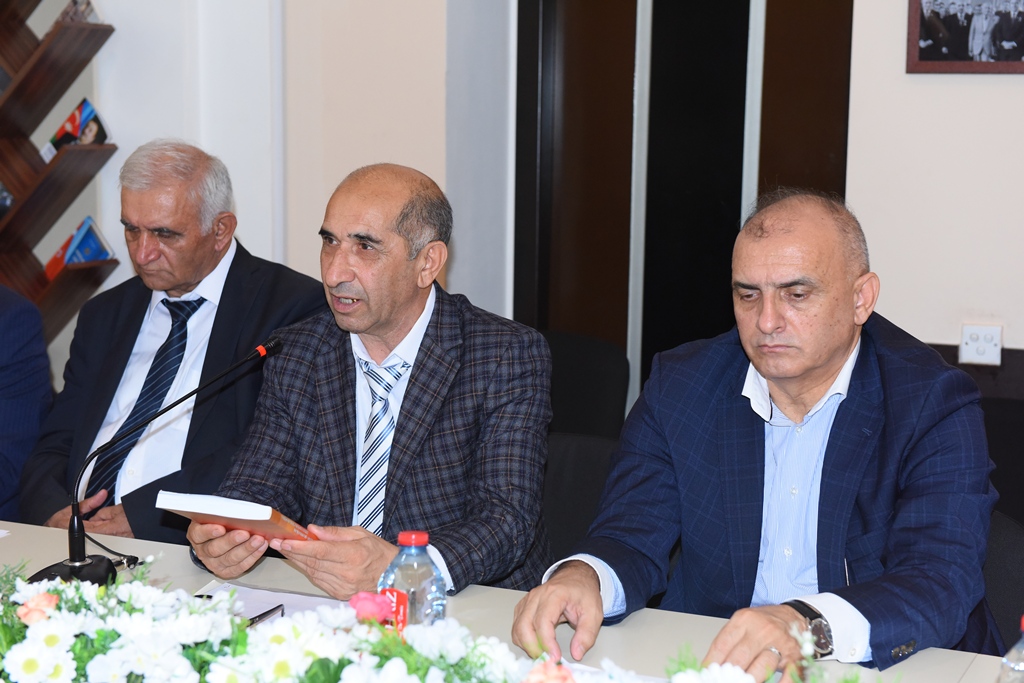“The Grammar of the Armenian Language” will fill the gap in this field”- Preface and comment to the book. Preface for the Grammar Book
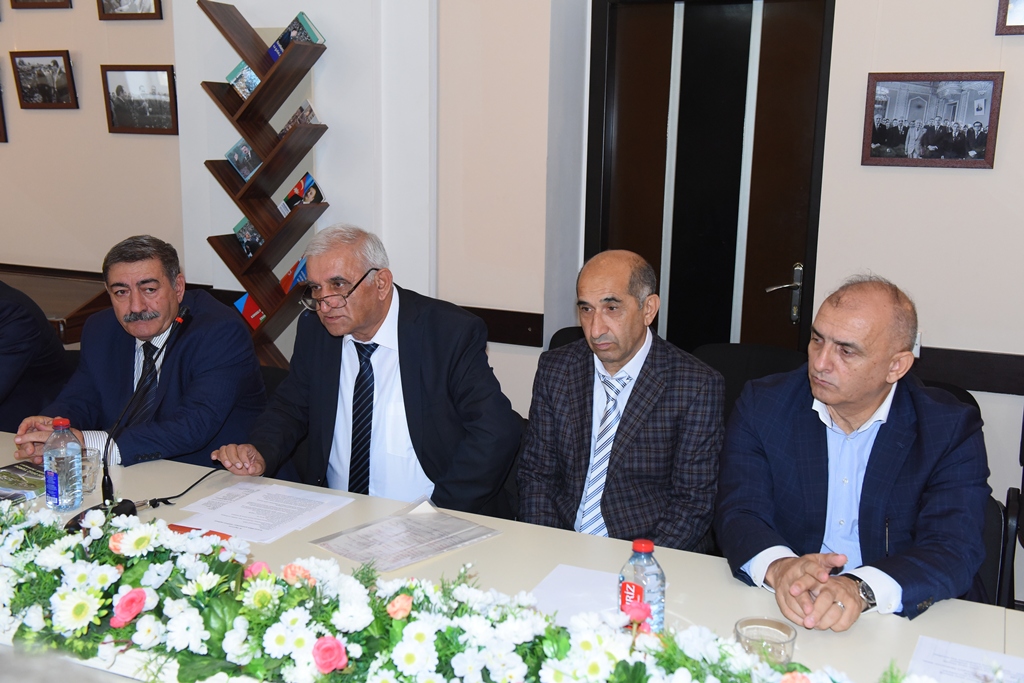
 The book “The Grammar of the Armenian Language” by Huseyn Asgarov, who has been teaching Armenian Language at the Azerbaijan University of Languages for several years, is essential to fill the existing gap. One of the noteworthy aspects of this book, which is based on grammar books written by different authors in Armenian, Russian and English, is the observance of general grammatical rules. That is, the main direction of the textbook is phonetics, morphology, syntax. The lesson addresses the speeches after a brief review of the Armenian language alphabet, its vowels, consonant systems, silence, clanging of consonants, sentence editing, word order and article. It should be emphasized that the order of the Armenian language was not the same as in the Middle Ages, but in the modern era, as in European languages, news was the second-class members. However, during the course of the time, the influence of the Turkic languages on the Armenian language completely changed the grammatical structure of the Armenian language and became a form of grammatical structure of the modern Azerbaijani language. Involvement- second-tier members news.
The book “The Grammar of the Armenian Language” by Huseyn Asgarov, who has been teaching Armenian Language at the Azerbaijan University of Languages for several years, is essential to fill the existing gap. One of the noteworthy aspects of this book, which is based on grammar books written by different authors in Armenian, Russian and English, is the observance of general grammatical rules. That is, the main direction of the textbook is phonetics, morphology, syntax. The lesson addresses the speeches after a brief review of the Armenian language alphabet, its vowels, consonant systems, silence, clanging of consonants, sentence editing, word order and article. It should be emphasized that the order of the Armenian language was not the same as in the Middle Ages, but in the modern era, as in European languages, news was the second-class members. However, during the course of the time, the influence of the Turkic languages on the Armenian language completely changed the grammatical structure of the Armenian language and became a form of grammatical structure of the modern Azerbaijani language. Involvement- second-tier members news.
The textbook is naturally compiled with the Azerbaijani language. However, the individual features of each language are virtually self-sustaining. For example: There are certain and indefinitie references in many languages of the Armenian language. This is not available in Azerbaijani language. If there are six noun cases in the Azerbaijani language, in contrast, seven of the noun cases are in Armenian language. They are presented in the book. The textbook finds that, as in the Azerbaijani language, the common form of names in the Armenian language is improved by increasing the number of words.
The textbook describes the adjective part of speech, its types, comparability rates, adjectives and their comparative explanation in Azerbaijani language.The section contains detailed information about the cardinal and ordinal numbers, fraction numbers. It is very interesting that in many languages like Russian, English, German, French, Georgian, Arabic, Persian, numbers go from single numbers to double after 10, but in Armenian just like in Azerbaijani vice versa. For instance: eleven, twelve, thirteen and so on. In our opinion, this changed its structure as a result of the influence of Turkic languages living in the Caucasus.
The researcher, writer M.Nalbadyan wrote in the nineteenth century that, as our literature, our language was also influenced by the Turkish language. (under the influence of the Azerbaijani Ə,Z, it Ə,Z was droppped).
The pronoun section in the textbook was widely worked on, and the distinctions in comparison with the Azerbaijani language have been clearly shown. The book shows that there are eight types of pronouns in the Armenian language: person, sign, mixed, question, relative, definite, indefinite, denial. Here is a brief description of each species, as well as the pricing of the person.
While discussing the verb in the textbooks, their types, images, and timing are translated into Azerbaijani. There is brief information about an exclamation mark.The syntax was not so large in comparison with the morphology section. In the syntax section, information about declarative, question, order, explanation sentences were given. As in other grammatical rules, tasks are given here after the explanation. Subject and predicate, their agreement, attribute, their expression with parts of speech, object, adverb and its types- action, time, purpose, reason, homogenous parts of sentences, address, modal words, compound sentence (subordinate, unscriptural compound sentence), branch sentences are reflected in syntax section of the textbook. A list of literature used was given at the end of the textbook. For many years, the Armenian language is taught at the High Schools of our republic.
In our opinion, the textbook “The Grammar of the Armenian Language” by Huseyn Hasan oghlu Asgarov, a teacher of the Foreign Languages Department of AUL, is the first step in this area.
The book may have some deficiencies. We express our gratitude to everyone who shares their valuable ideas for the next improved edition. Asgar Mammad oghlu Zeynalov Doctor of philological sciences, professor Review on “Grammar of Armenian Language” textbook by Huseyn Asgarov Books about Armenian grammar, its phonetic features, morphological and syntactic structure are written in many countries and works in the field of Armenian language research revealed. The book “Grammar of the Armenian Language” prepared by Huseyn Asgarov, who teaches Armenian at Azerbaijan University of Languages, is a compilation of these works and is good example for other groups of people who want to study in high schools and learn the language. It is also one of the first in Azerbaijan, and it will be a good source of less common textbooks in this field. While using the grammar books written by different authors in different times, Huseyn Asgarov studied it in the main grammatical features of the Azerbaijani language and paid special attention to the peculiarities that distinguish it from other languages. It is known that the Armenian language appeared as a written language in the Armenian alphabet created by the monk Mesrop Mashtots in the 5th century and divided into three periods in the development process: the ancient Armenian (V-XI century), Middle Ages (XII-X centuries) and new Armenian (from XVII century- present). Huseyn Asgarov took into consideration these periods of the Armenian language in his book and examined the grammatical changes in the language as a researcher. During the study of the book the language sound system, noun, adjective, number, pronoun, verb and other language elements have been given clearly and in easy way. Grammatical rules are supported by examples from Armenian literature. The author has also taken into account these aspects of the Armenian language, as it relates to the eastern branch of the Indo-European family of languages, not only the Eastern European language, but also the Altai and the Greek language. There is an Armenian-language connection in a larger group of Western-Indian dialects in the West. From the scientific point of view, this relationship appears to be significant when presenting the present Armenian language characteristic. The Armenian language was affected by many languages. The Turkish language, including the influence of the Azerbaijani language, has changed the syntax of the Armenian language. This feature is best described in the book. Famous Western Armenians also mentioned the enrichment of this language by passing numerous words from Turkish into Armenian. Armenian Turkologist Hrachya Acaryan mentioned about 4000 words in Armenian from Turkish”. Other Armenian researchers also did not deny the impact of the Turkish language. The author has taken these into account when making generalizations about the phonetic, morphological and syntactic composition of the Armenian, and confirmed the idea with examples he gave. The features of this language are highlighted in separate sections of the book. The textbook was published for those who want to learn this language more easily. While examining the book “Grammar of the Armenian Language” prepared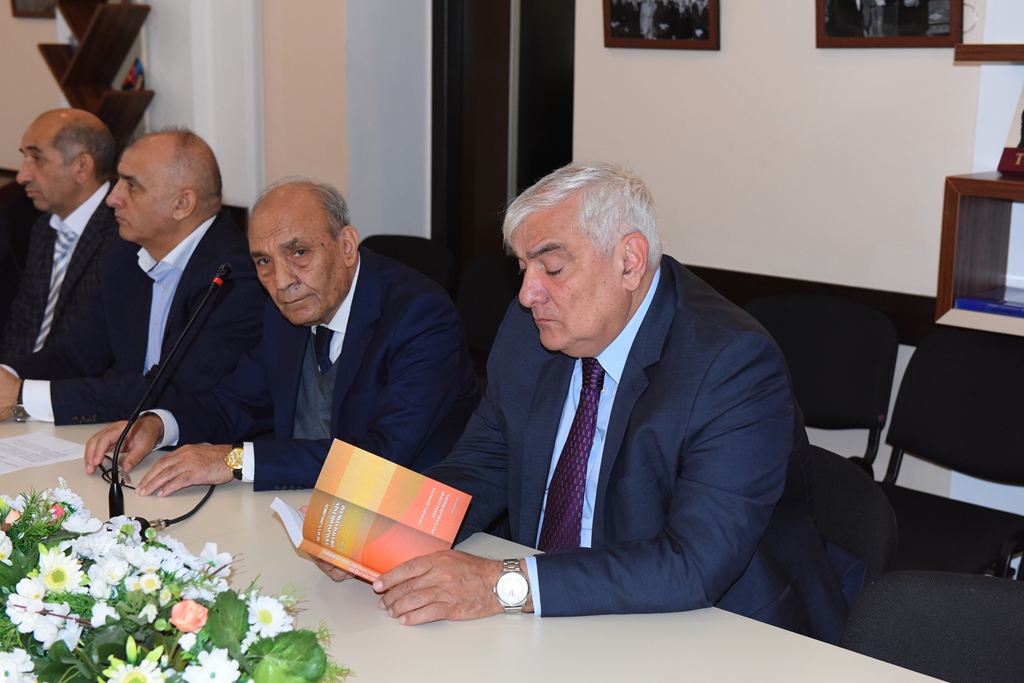 by Huseyn Asgarov, i came to the conclusion that the book may not cover all the characteristic features of the Armenian, but it is acceptable as a textbook for students and other groups of Armenians who want to learn Armenian and will fill the gap in this area. It is possible to print and use it as a teaching textbook. I wish success to the author.
Prof. Gafar Chakmakli,
Erciyes University (Turkey) Faculty of Literature
Teacher of the Department of Armenian Language and Literature
by Huseyn Asgarov, i came to the conclusion that the book may not cover all the characteristic features of the Armenian, but it is acceptable as a textbook for students and other groups of Armenians who want to learn Armenian and will fill the gap in this area. It is possible to print and use it as a teaching textbook. I wish success to the author.
Prof. Gafar Chakmakli,
Erciyes University (Turkey) Faculty of Literature
Teacher of the Department of Armenian Language and Literature
